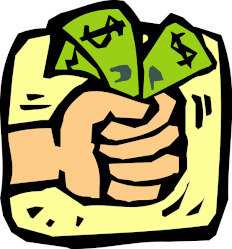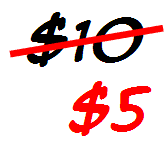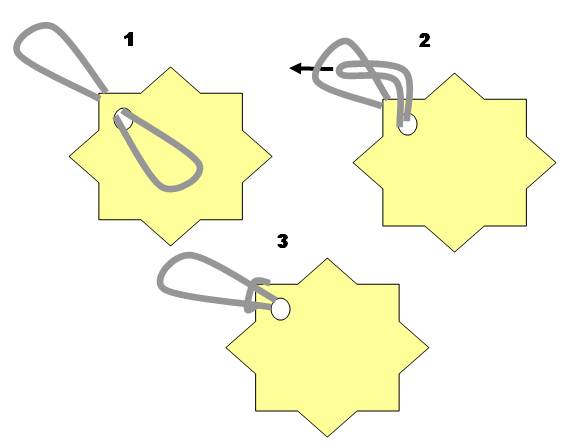One of the hardest decisions you will have to make is what garage sale prices to put on your items. These garage sale pricing tips will make it easy.
Forget about how much you paid originally or how valuable it has been to you or any sentimental attachment you have. If it’s of no value to you anymore then that is its true value – anything more will be a bonus. If you can’t bring yourself to price an item at ‘garage sale’ prices described below, don’t include it in your garage sale but try selling it through one of these garage sale alternatives like a classified ad in your local paper, online auction sites or consignment outlets.
Don’t forget that to make as much money as you can from your garage sale, you have to sell your stuff so price to sell but not to give away.
Table of Contents
- The 2 Golden Rules for Garage Sale Pricing
- The 10% Pricing Rule
- Set your prices with “room to move”
- Price based on demand
- Price items to be resold on eBay
- Price Garage Sale items below Thrift Store Prices
- Co-ordinate prices in group sales
- Help sell high-priced items with price comparisons
- Generally keep most things under $5
- Cut down on the coin you will need by grouping items
- Price items as already being reduced
- Don’t be lazy and just put all items of the same price on a table
- Individually price garage sale items
- Use tie-on tags instead of stickers to price items
- Prevent buyers swapping tie-on tags
- Make your own eye-catching garage sale price tags
- Consider recording your items and prices on a separate Inventory Record
- Consider NOT using the color-coding method to price your items
- But consider using color-coded tags in a group garage sale
The 2 Golden Rules for Garage Sale Pricing
- Ask yourself, “If I needed this, what would I be willing to pay for it?
- What price have other garage sales around the area been selling it for?
The 10% Pricing Rule
Generally garage sale prices this year are 10% to 20% of the current retail price depending on the item’s condition and the demand. Don’t forget, you’re selling used items with no guarantee or warranty!
For example, if something retails for $50 and your item is in near new condition you would price it at $10 or $5 if it’s in a worn condition. An item with tags or in its original box can bring a slightly higher price.
Other factors that will affect your prices include:
- is what you’re trying to sell in-season or out of season
- is it still in fashion
- what is it being sold for in surrounding garage sales, flea markets and rummage sales

Set your prices with “room to move”
Most people expect prices at garage sales to be just the starting price and are about 25% to 50% above the seller’s (ie your) bottom-line price to allow for negotiating. The amount depends on the condition of the item and how much you are prepared to haggle. As most haggling is usually just a split-the-difference exercise, to end at the highest possible finishing price your initial asking price should start as high as you can without scaring away shoppers.
Below is a garage sale negotiation guide showing your bottom-line price and how much you could put on the price tag:
| Your bottom-line price | The price for your price tag |
| $20 | $25 or $30 |
| $15 | $18 or $20 |
| $10 | $12 or $15 |
| $5 | $6 or $8 |
| $2 | $2.50 or $3 |
| $1 | $1.50 or $1.75 |
| $0.50 | $0.75 |
Price based on demand
- If you have a popular or collectable item that you think will get snapped up quickly in your garage sale, you should mark it with an even higher starting price. You should do research first (eg check eBay) to get a reasonable price for this type of item. You’ll find that serious collectors will buy no matter what the cost.
- If you are having your garage sale in spring then you can ask for higher prices for your summer items. If you are having your garage sale in autumn then your winter or snow stuff will be in demand so you can ask slightly higher prices.
Price items to be resold on eBay

People make a living from buying things cheaply at garage sales and reselling them for a much higher price on eBay or other online auction sites. If you have any small unique items, check eBay to see if any have been sold before and set your asking price at 50% – 75% of the price they were sold for (not the initial asking price). This way, you are maximizing your sales price and the buyer thinks they’re getting a bargain
Price Garage Sale items below Thrift Store Prices
Shoppers won’t be interested in buying something from your garage sale if they can get the same at a cheaper price at the local Salvation Army or Goodwill store. Visit your local stores and note the prices of the items similar to yours and price yours at least half. If you were donating your items, this Valuation Guide for Salvation Army Donations will give you a guide to the donation value or common items. You will see that the table includes low and high estimates of value. Please choose a value within this range that is in keeping with your item’s relative age and quality.
Co-ordinate prices in group sales
If you’re having a group garage sale and similar items are being sold and they are in the same condition, agree on a similar price. If one item is in a better condition, agree on what the higher price should be. You don’t want to be competing against each other in the same garage sale.
Help sell high-priced items with price comparisons
If you have a high-priced or valuable item, like furniture that appears in catalogues, cut out the ad and attach it to your item too or include a copy of the original paperwork. This way people can see that they’re still getting a good deal. If you don’t have an ad for your garage sale, then a simple index card with the original retail price will still help. Refer to Signs for the garage that sell for more tips when making signs for high-priced items.
Generally keep most things under $5
Buyers expect and are prepared to buy at this price range. It is easier to sell a lot of $1 – $2 items than trying to sell a few higher priced items. It is amazing how quickly $1 – $2 sales add up.
Cut down on the coin you will need by grouping items
Instead of selling individual paperback books for 25c each, sell them as a group of 4 for $1. If someone only wants 3 then it’s still $1 so they might as well pick another book.

Price items as already being reduced
If your initial price is $10 then mark it as $20, cross this out and write $10 beside it. People will think they are already getting a bargain. Retail stores do it so why not in your garage sale too. Works for all items of any price but more so for higher-priced items.
Don’t be lazy and just put all items of the same price on a table
It doesn’t work. Putting all similarly priced items on the same table with one sign above the table saying “All items on this table $1” might be easier initially for you but when a customer comes up holding an item to buy – which tables did it come from? The buyer may say “Oh, I am sure it was on the $1 table.” Are they lying, did another shopper pick it up from the $5 dollar table and put it back down on the $1 dollar table by mistake, did you put it on the $1 table? What do you do if a customer comes up with a number of items from different tables? It just doesn’t work and you won’t be able to maximize your sales.
Individually price garage sale items
- Most garage sale shoppers prefer items to be individually priced rather than having to ask you for the price each time.
- It makes your day easier too as you have already decided on your asking price for each item.
- It makes your day easier because you aren’t constantly interrupted with the same question, “How much is this?”.
- It puts the haggling in your favor as you start at the price you set and it’s the customer’s job to get the price down lower. If you didn’t specify a price the buyer will offer the lowest price they are willing to pay and it’s now your job to get it higher.
It’s reported that garage sale shoppers perceive the item with a higher value with a tag rather than a sticker. Also stickers can be hard to get off later and people will use this fact to argue a price reduction. If you have to use stick-on labels, use painter’s masking tape or easy peel-off low-stick labels and don’t stick them on until just before the garage sale. The longer a sticker is on, the harder it is to get off.
Include a short description of the item (one or two words) on the price tag too. This will enable you to check that the correct tag is still on the correct item.
Get some bright neon colored poster paper and with a shaped stencil (eg. stars, hearts, triangles, star bursts, etc) cut out your own tags then use a hole puncher to make a hole to thread through some string or a rubber band. Get the kids to add a swirl of glue and sprinkle with glitter. Don’t forget to leave some room to write the price.

Consider recording your items and prices on a separate Inventory Record
Your Inventory Record can be used to check that the price of the item being bought is the correct price and the tag or sticker hasn’t been swapped with a low cost item.
Consider NOT using the color-coding method to price your items
Using color-coded tags or stickers on items and having a big sign on the wall describing what each color represents (eg yellow=50c, blue=$1, etc) is sometimes used. This method enables easy price reductions during the day because you just need to change one sign rather than on every item. Unfortunately, you WILL still get a lot of customers who don’t notice (or deliberately ignore) the sign and ask you how much items are.
In a group garage sale, color-coded price tags or stickers is a good way to identify which family or neighbor the item is from. When a sale is made, you can easily record the sale on the Inventory/Sales Record. An alternative to using color-coding to identify items from different groups is to include the first letter of the family name along with the price on all tags.
